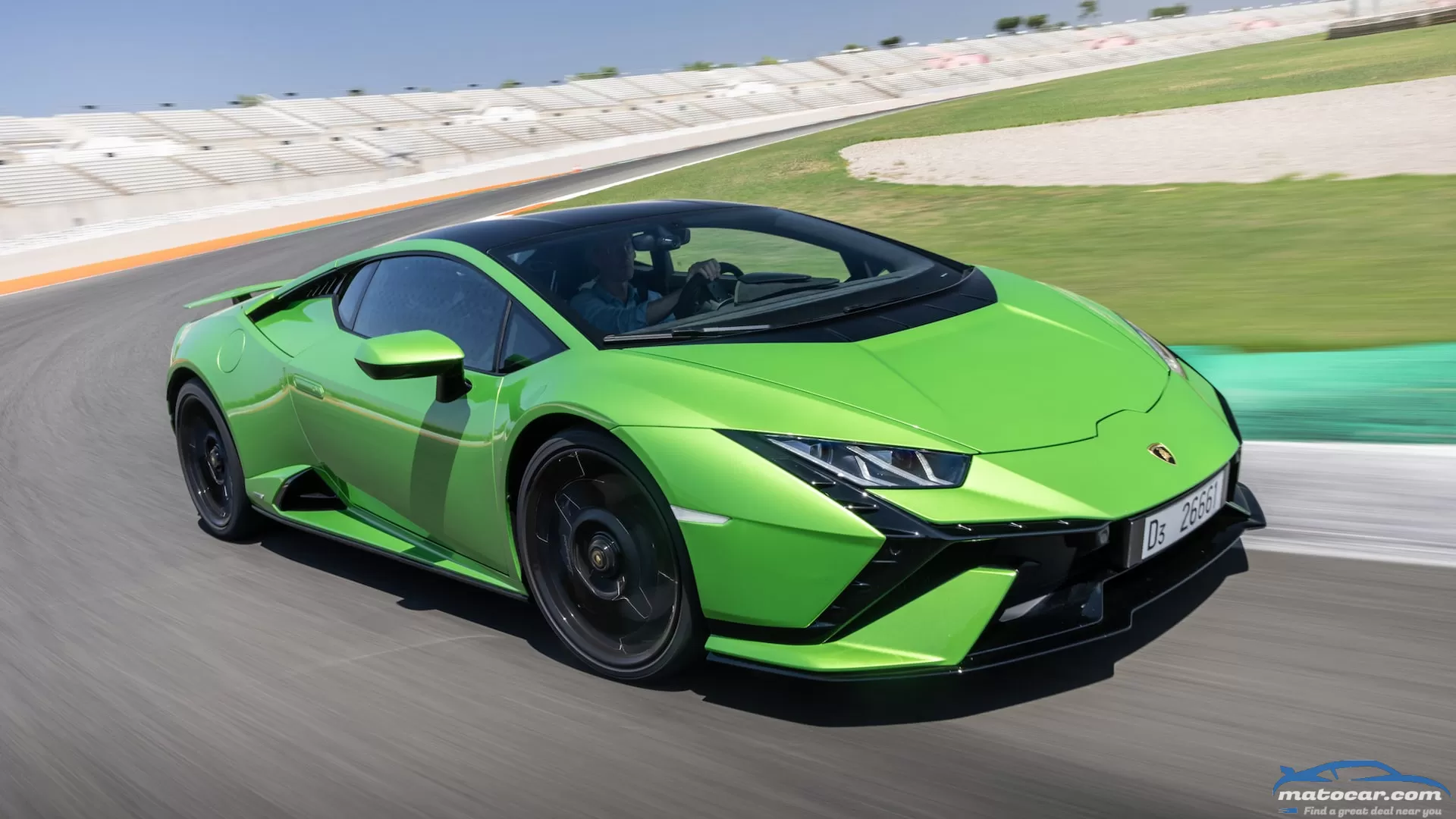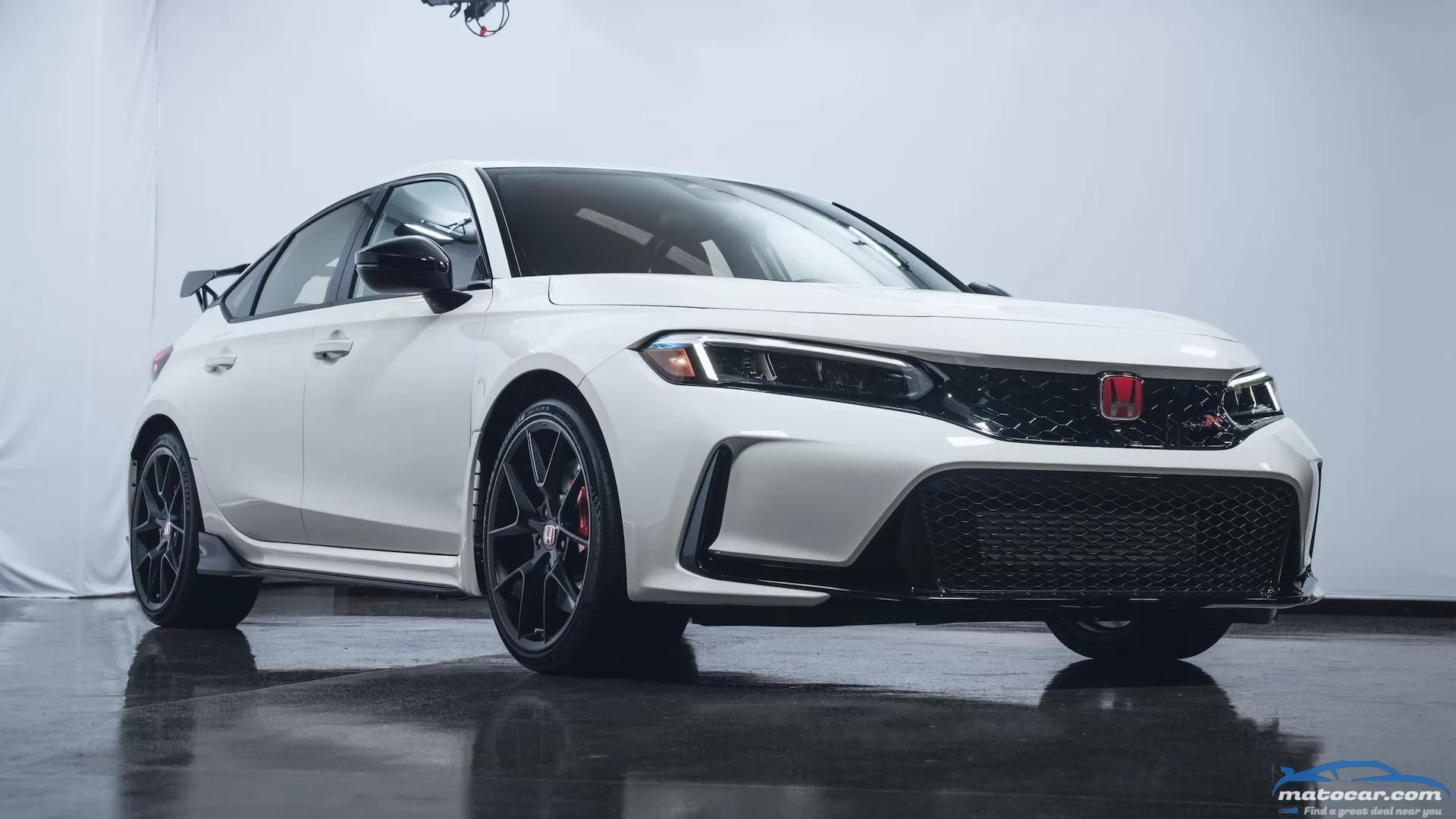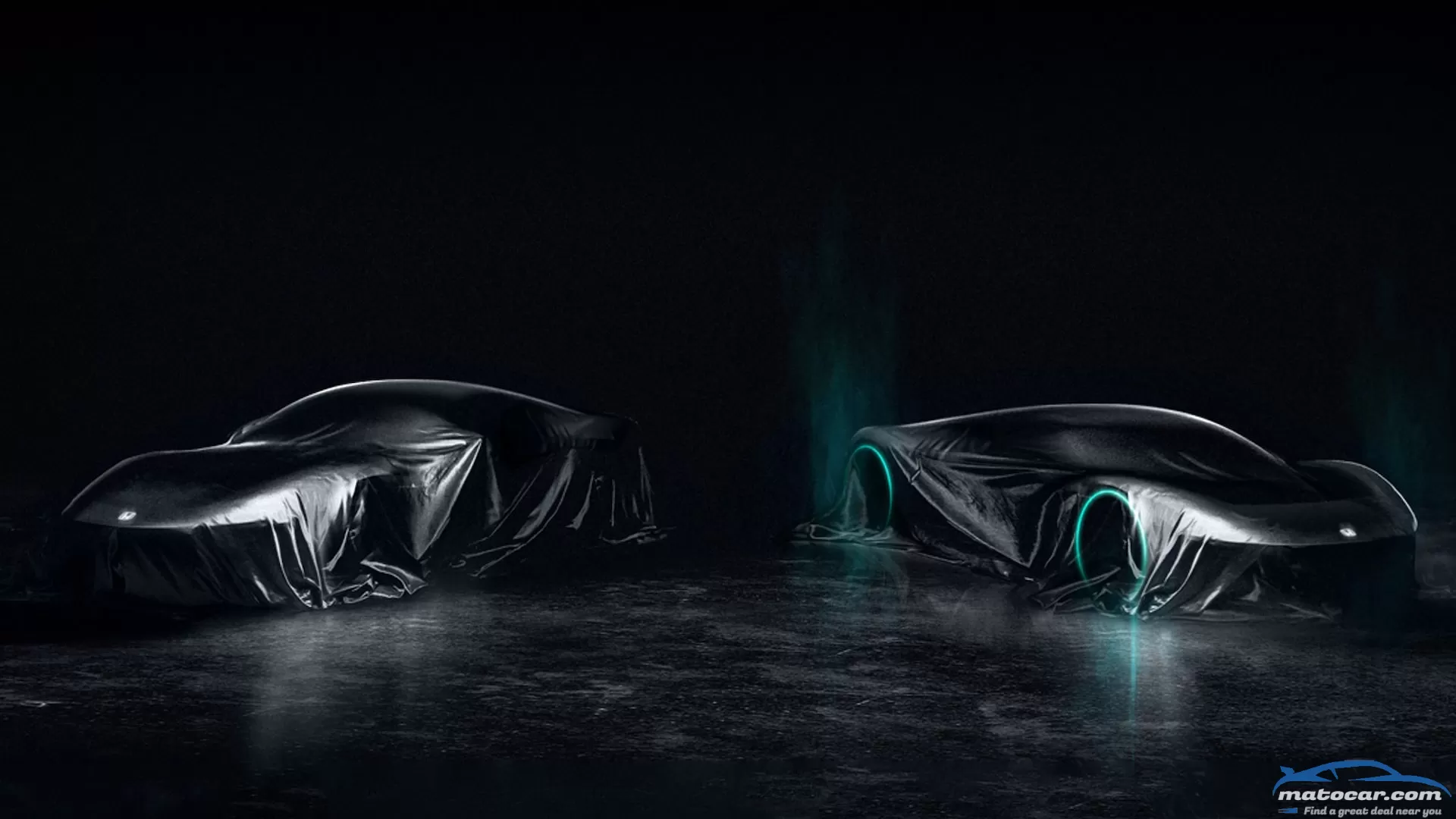Lamborghini Huracán Tecnica Review: Oh Freaking Baby

Age has not wearied it, nor the years condemned. The 5.2-liter V-10 that powers the 2023 Lamborghini Huracán Tecnica may trace its origins back to a time when the iPhone was an idea and Amazon a work in progress, but one full-throttle acceleration run, one hot lap of a racetrack, one flat-out blast along a challenging back road is enough to convince you: It's one of the all-time greats. An engine for the supercar gods.
It roars and bellows and shrieks and snarls, this engine, performing a heroic horsepower opera that's neither muffled by turbos nor synthesized by electric motors, and it punches harder than Tyson Fury in a bad mood. It's the reason the Tecnica will be wistfully remembered when we're all whooshing around in mega-horsepower EVs.
But it's not the sole reason.
The genius of the Huracán Tecnica is simple, though its execution is rather more nuanced. The Tecnica combines the 631-hp and 417-lb-ft version of the V-10 from the edgy, track-focused Huracán STO with a rear-drive, rear-steer chassis that's been tuned for all-around road work. The cabin can be trimmed with the most luxurious materials in the Lamborghini catalogue and offers all the connectivity and functionality expected in a modern car—from Apple's CarPlay to Amazon's Alexa—controlled via a redesigned user interface that will also call up arcane nuggets of performance data on demand.
All that is wrapped in bodywork massaged to give the Tecnica a longer, lower profile, a visually wider stance, and more sophistication to its menace. Think Tyson Fury in a Zegna suit.
There's a new front bumper with the black Y-shaped graphic derived from the wild Terzo Millennio concept. The revised greenhouse riffs on that of the limited-edition, track-only Essenza SCV12. At the rear is a reshaped bumper and diffuser, and the lower edges of the rear fenders have been pulled inward to expose more of the rear tires. Two massive hexagonal exhaust outlets hint at the bellicose ferocity lurking in the engine bay.
Both the front and rear hoods are carbon fiber, the latter with a clear section that exposes the top of the V-10, and both contributing to a 22-pound reduction in weight over the Huracán Evo RWD. A vertical rear window nestles between the flying buttresses that extend rearward over the air intakes.
There's improved function in the new form, too. The new front bumper design incorporates an air curtain and directs air through the front wheel wells to increase downforce and improve brake cooling. The fixed rear wing is a major contributor to the 35 percent increase in rear downforce compared with the Huracán Evo RWD, along with a 20 percent reduction in drag.
Compared with the manic STO, it only takes a mile or so behind the wheel to understand that the Tecnica is a kinder, gentler Huracán. The revised suspension means the ride won't shake the fillings from your teeth and it's nowhere near as noisy at cruising speeds on the freeway, especially with the car in the softest of its three drive modes, Strada, and the seven-speed dual-clutch transmission left in Auto. But that's just the velvet glove over the iron fist.
Thumbing the little button at the base of the third spoke on the steering wheel into Sport mode gives the powertrain a triple shot of espresso. Throttle response is sharper, and shift times shorter. And the electronics that control the car's adaptive shocks and the rear-steer, traction control, and torque-vectoring systems get a revised set of orders from the Lamborghini Dinamica Viecolo Integrata (LDVI) system, with its accelerators and gyroscope sensors at the Tecnica's center of gravity that monitor lateral, longitudinal and vertical loads, as well as body roll, pitch, and yaw.
The result is a car that feels more urgent, more focused, and yet more playful; willing to oversteer if you want to showboat on the track, but still possessed of terrific traction and stability when you need it.
Corsa mode isn't quite the Spinal Tap experience it is in the Huracán STO, but the Tecnica with its race-face on is still a weapon on the track, especially when equipped, as our test cars were for the lapping sessions, with the optional Bridgestone Potenza Race tires, which are treaded and street-legal but, as Lamborghini engineers coyly put it, "are for dry roads."
In Corsa, the powertrain is calibrated to provide optimized track-oriented throttle response and the fastest gearshifts, and the omniscient LDVI instructs its electronic minions to deliver maximum lateral and longitudinal grip. Part of the Corsa protocol includes locking the rear-steer system. Shutting down what is pitched as a dynamic driving aid might seem slightly counterintuitive, but it delivers purer, more precise handling at the limit.
If you're good enough.
That's not to say the Huracán Tecnica will throw you under the bus if you get things wrong. It won't; this is as sweet a Lambo at the limit as has ever been built. But as in the Huracán GT3 race car, nailing a truly quick lap time means finding the balance between the vivid front-end response and the rush of power and torque to the rear wheels when get on the gas.
Yes, the LDVI is there, working furiously in the background to support you, and it's nowhere near as fine a balancing act as in the race car. But this subtly analog element to taming the Tecnica; the sense that extracting the last little bit of the car's performance is down to you, is a big part of this Lambo's appeal.
You can use Corsa mode on the road, of course, but Sport is the best all-round setup for a blast through the twisties. There's a little more support from the traction and stability control—useful when you can't see that greasy patch around the next corner—and the rear-steer system delivers both agility and stability. The direct ratio steering, uncorrupted by a driven front axle, is a joy; precise and communicative, with just the right amount of weighting.
Priced at $239,000, the Tecnica is the sweet spot of the Huracán lineup. It gives you nearly all the thrills of the borderline silly STO in a mature, grown-up supercar you can realistically drive every day. This Huracán is a feel-good Lamborghini, one that makes you smile every time you hit the gas.
It's also a Lamborghini that feels like the end of an era.
An all-new Huracán replacement is scheduled to appear at the end of 2024. It's rumored to be powered by a mild-hybrid twin-turbo V-8. Oh, it will undoubtedly be better supercar than the Tecnica by any objective measure; quicker, with even more confidence-inspiring handling. But we'll miss the 5.2-liter V-10's sound and fury. Especially the sound.
Looks good! More details?2023 Lamborghini Huracán Tecnica Specifications
PRICE
$239,000
LAYOUT
Mid-engine, RWD, 2-pass, 2-door coupe
ENGINE
5.2L/631-hp/417-lb-ft DOHC 40-valve V-10
TRANSMISSION
7 -speed dual-clutch auto
CURB WEIGHT
3500 lb (MT est)
WHEELBASE
103.2 in
L x W x H
179.8 x 76.1 x45.9 in
0-60 MPH
3.2 sec (mfr est)
EPA FUEL ECON, CITY/HWY/COMB
N/A
ON SALE
Now
Show AllYou may also like
After months of teasers, the wait is finally over. The 2023 Honda Civic Type R has been revealed, and unlike previous years, the performance-oriented model launched on American soil with IndyCar driver Colton Herta behind the wheel. For a long time, Americans were banned from purchasing the Civic Type R, but this time Honda is making a statement by doing the global reveal in Los Angeles.The Type R joins the Si and Sport models in the Civic's lineup and stands as the pinnacle of performance in Honda's portfolio. The 2023 model will be the most powerful Honda car in America, with Honda promising more power than ever before.Untamed PerformanceWhile Honda is still tightlipped about its horsepower and torque numbers, we're told it will have more power than before. That means we'll see figures north of 306 hp and 295 lb-ft of torque—the numbers for the current Type R. The familiar 2.0-liter four-cylinder turbo returns, except this time it will be mated to an improved six-speed manual transmission with rev-matching. As of this time, Honda is not planning to offer an automatic transmission in the Type R.Honda says the new Type R will be rewarding and addictive to drive. With an enhanced suspension system and steering performance, we're told the driving feel is direct and engaging, though we'll have to wait until this fall to try it ourselves. But with more power, a new, lightweight chassis, more body rigidity and improved high-speed stability, it sounds like the Type R has everything to deliver a thrilling experience behind the wheel.Just as important, Honda made sure the Type R would stop confidently. The 19-inch wheels are wrapped around Michelin Pilot Sport tires, which should provide sharp grip on the corners and under hard acceleration and stopping. While Honda didn't reveal any specs, the big, red Brembo calipers up front will make sure the Type R brakes properly.With its compact, hatchback body, loads of power and handling hardware, the Type R stands out in the segment. This time, however, it will have more competition. Newcomers such as the Toyota GR Corolla and Hyundai Elantra N have gotten the enthusiast's attention, and the Volkswagen Golf R is back for a new generation. While the GR Corolla and Golf R get all-wheel drive traction, the Civic Type R and Elantra N are front-drive only. But the Honda will continue to stand out with its power numbers. The Elantra N makes 276 hp and the GR Corolla pumps 300 hp, and we expect the updated Type R's numbers to be between 307 and 315 hp. That means the Golf R—with its 328 hp—should continue to be the most powerful of the group.Even if the power numbers don't increase by a lot, there will be a lot to like about the new car. The current-generation Type R continues to be among our favorite hot hatches in the market.Mature ExteriorDespite the 11th-generation Civic gaining a more mature styling, the Civic Type R does a good job distinguishing itself from the rest of the lineup. While the entire Civic lineup lost its race boy design, the new model will be more appealing to those who thought the previous design was too wild. The new Type R is longer, wider, and lower than the outgoing model, and every aerodynamic element is there for a reason.From the front, the honeycomb grille in the lower fascia gives the Type R a distinctive look, and sporty elements on the fascia stand out. Other dynamic cues include air vents on the hood and behind the front wheels. If that's not enough to differentiate it from the rest, the red Honda logo and Type R badge on the grille pop out.From the profile, the side skirts help redirect the wind for better aerodynamics. Unlike any other Civic, the second half of the rear doors expand outward to give the Type R more hips. The rear continues to be the best angle, with a massive wing that's hard to miss and a redesigned rear diffuser that houses the signature three-round exhaust system.There will be five different colors available—Rallye Red, Racing Blue Pearl, Crystal Black Pearl, Sonic Grey Pearl, and Historic Championship White. The latter is exclusive for Type R and one that's famous among Honda enthusiasts.A Familiar InteriorThe red bucket seats and red carpet—two signature elements for the Type R—are back. Comfortable and supportive, the suede-like seats should be able to keep the driver and front passenger tight when the driving experience gets intensive. A numbered Type R badge is now placed on the passenger's dash.A new +R driving mode will show exclusive graphics with engine rpms, indicator lights and gear position indicator displayed at the top, while the bottom display will have other information selected by the driver. A stopwatch to record lap times and the ability to share driving videos is also incorporated in the infotainment system.The rest of the cabin will be familiar to Civic drivers. A honeycomb mesh grille expands across the dashboard and houses the air vents. The HVAC controls are backlit for a premium look, and the digital instrument cluster is standard. Like the top-trim Civic Hatchback, the Type R comes with a 9.0-inch touchscreen with wireless Apple CarPlay and Android Auto, as well as three USB ports.Is the 2023 Honda Civic Type R Worth It?We'll have to wait a little longer to find out the Type R's performance figures, but from what we've seen so far it looks like Honda's promise of delivering a thrilling driving experience might be fulfilled. The 2023 Honda Civic Type R will be on sale this fall, and we can't wait to get behind the wheel. Although Honda didn't mention pricing, we don't expect it to increase too much from the current generation, which starts at $38,910.
Welcome to MotorTrend's inaugural Performance Vehicle of the Year (PVOTY) competition. A quick history: We've awarded our Car of the Year title since 1949. In 1978, we added Truck of the Year and then SUV of the Year in 1999. Alongside Person of the Year, these have been our automotive Of The Year awards for decades. Until now.Why, and why now? It's instructive to look back at MotorTrend's old Import Car of the Year. First awarded in 1970, the idea of ICOTY was to finally acknowledge an indisputable truth: Cars from auto manufacturers outside of America were here to stay and should be celebrated, at least for a while.We awarded ICOTY alongside COTY until 1999, when my predecessors decided to fold the former back into the latter because shifts in automotive manufacturing and global economics challenged the notion of what constitutes foreign and domestic vehicle production. What is a car's country of origin if the engine is made in Brazil, the body panels are stamped in Canada, the transmission and wiring harness are produced in Mexico, and final assembly occurs in Michigan? Or if multiple factories around the world assemble the same vehicle? Our editorial forebears ultimately decided none of this matters and that the inherent goodness of the car, the breakthrough experience it delivers, and how history would view it were much more important.They read the room and made the right call, which is what we are doing here with our focus on performance. I submit to you the following:We live in a golden automotive age. Thirteen years ago, we reported the horsepower wars were over. We were wrong. To twitch an eyebrow these days, you need at least 500 hp, if not four figures for tongues to really start wagging. This inflation is not just limited to hyper-expensive exotic cars. For $37,000, you can buy a Ford Mustang GT with 460 ponies. Need more vroom? Try the 505-hp Alfa Romeo Stelvio. Or if you need to move a couch, in a hurry, up a sand dune? The 702-hp Ram 1500 TRX has you covered.These power and torque increases, along with all the fancy systems that allow their delivery, have resulted in a golden age of performance, as well. Those who monitor lap records at the vaunted Nürburgring Nordschleife know what I'm talking about. It used to be that a stock production car lapping the iconic German test track in less than 8 minutes joined an exclusive club. Now, a hot hatch like the Honda Civic Type R is quicker than that, and we see Porsches, Mercedes-AMGs, and Lamborghinis running in the 6:40 (or quicker) bracket. Our own testing bears this out; in the past two years, we've seen our 0-60 record fall twice—first to less than 3.0 seconds and then to almost less than 2.0. This is bonkers.Megawatt advances in automotive tech are responsible for a lot of this golden-era shine. While one of the highest-horsepower production cars is still a 16-cylinder, quad-turbo, gas-burning Bugatti Chiron Super Sport, you can order our electrifying 2022 Car of the Year Lucid Air with up to 1,111 hp, or a Tesla Model S with 1,020 hp. On the truck side, the Hummer EV pickup is also available with 1,000 hp, and our 2022 Truck of the Year, the Rivian R1T, comes standard with 835 hp. Oh, and the two vehicles that broke our 0-60 record? Electric all-stars from Porsche and Tesla.As we continue to cover the evolution of the automobile and the automotive industry, we believe our electrified future is inevitable, so we're going to walk a second, parallel path with all the existing, mostly gas-burning vehicles we know and love.Internal combustion technology has never seen higher outputs, greater efficiency, or more thrills per cubic inch than right now. But as more carmakers trumpet about going all in on EVs, we receive quietly distributed notices about their final run of internal combustion engines, starting with the burliest V-10s and V-8s. Exiting right alongside: manual transmissions.We know some of you mourn the coming loss of dropping the clutch, mashing the gas, and ripping your right hand through six or seven gears. You loudly curse this transition; we hear you and understand. Every year, for more than a decade, we sent dozens of staffers on the road for two weeks, testing and driving the world's top sports cars in search of the Best Driver's Car. But that BDC program has run its course; PVOTY is Version 2.0, built upon the belief it's possible to be excited for the future, embracing all the broken barriers to come, while celebrating the end of an era. That is what we set out to do with our Performance Vehicle of the Year. We're applying our decades of experience and rigorous, industry-leading Of The Year framework to the realm of performance machines, whatever body style they happen to come in.Time is short. The world is changing. So let's round up the stickiest-tired whoop machines—whether gas- or electron-powered—and smoke 'em while we got 'em (and can still drive 'em). Please enjoy our first MotorTrend Performance Vehicle of Year competition.
WHAT IT IS: Honda plans to launch two electric sports cars in the medium term. The first is dubbed a "specialty model," and based on the teaser image Honda shared, it looks like it will have the proportions of a smaller, more affordable sports car. The return of the S2000 doesn't sound like a crazy idea, especially when everyone is resurrecting old model names. This will be the company's first electric sports car, but not its only one. The second model will serve as a halo, and based on its proportions, it looks like an Acura NSX with a wilder form. Honda hasn't said if both cars will carry the Honda brand name, but given the NSX falls under Acura for the North American market, it won't surprise us to see such a strategy continue.WHY IT MATTERS: As everyone goes electric, Honda has been one of the most conservative automakers to make the change. This move puts Honda on the radar, as the Japanese company aims to sell more than 500,000 electric vehicles in North America later this year. With the Acura NSX leaving production after the 2022 model year, this electric halo car could mark its return. And who won't be excited by an S2000-inspired electric car?PLATFORM AND POWERTRAIN: It's too early to know the details, but these two cars will be based on Honda's own electric vehicle platform, dubbed e:Architecture. Yes, Honda is working with General Motors to launch two SUVs—the Prologue and an unnamed Acura crossover—but the two sports models will be developed completely by Honda. We estimate each car will have at least 300 miles of range and a scintillating driving experience.ESTIMATED PRICE: The "specialty model" should start at less than $50,000, but the halo model will most likely cost more than $150,000.EXPECTED ON-SALE DATE: 2026 for the small model and 2027 for the halo car.




0 Comments